
Meet the Red Cockaded Woodpecker
The red-cockaded woodpecker can be identified by the following characteristics:
approximately seven inches long
a wingspan of about 15 inches
back is barred with black and white horizontal stripes
a black cap and nape (the back of the neck) that encircle large white cheek patches.
The red-cockaded woodpecker makes its home in mature, open pine forests in trees averaging 60 to 100 years old. The red-cockaded woodpecker is the only species of woodpecker that excavates its cavities exclusively in living pine trees, usually in older trees infected with red heart fungus, which softens the heartwood and makes cavity excavation easier.
The red-cockaded woodpecker has a complex social system. The birds live in groups which may include a mated pair, their current year’s offspring and helpers. Helpers are usually adult male birds, typically the son of one or both of the breeding pair. They help with incubating eggs, feeding young, constructing new cavities and defending the group’s territory. Young females are more likely to disperse, but RCWs are not far-ranging birds. If suitable habitat is not close by, the new generation of birds may not succeed. Females lay 2-4 eggs, in cavities usually created by males, in mid-April. Incubation lasts 10-12 days and the newly hatched young are fledged in about 24-27 days.
A woodpecker group roosts and nests in a cluster of cavity trees, which may include one to 30 trees occupying up to 10 acres. Most clusters have cavities under construction, some cavities completed and in use, and some abandoned and occupied by other animals.
Sometimes called the “Yankee Doodle Bird,” the term “cockaded” refers to a small red streak on each side of the male bird’s head. It is taken from the term “cockade,” which refers to an ornament worn on a hat as a badge. During the Revolutionary War, British soldiers had very elaborate uniforms, including hats with cockades, which the colonists laughingly referred to as “macaroni.” The Continental Army did not have fancy uniforms and often used feathers in their hats for decoration. Thus, the source of the lyrics from the song, Yankee Doodle Dandy, “... stuck a feather in his hat and called it macaroni.”
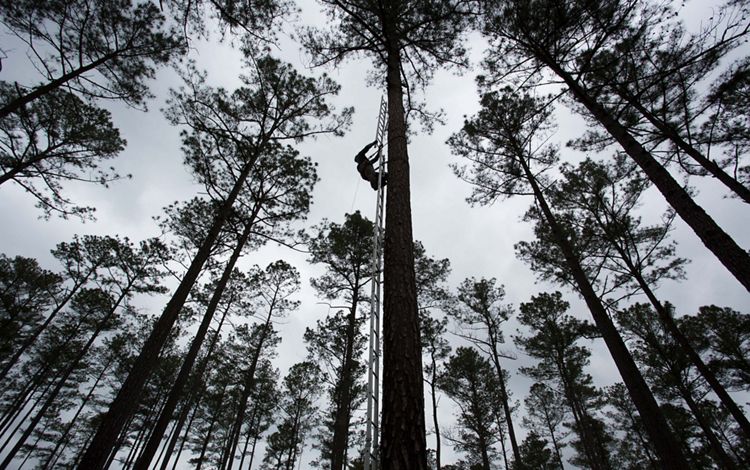


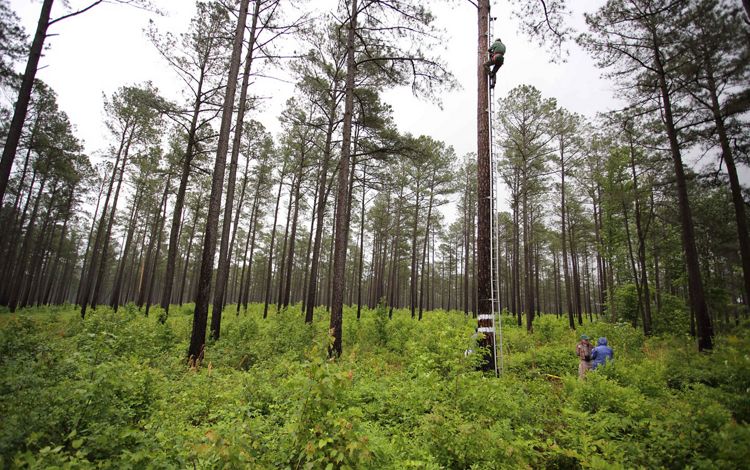
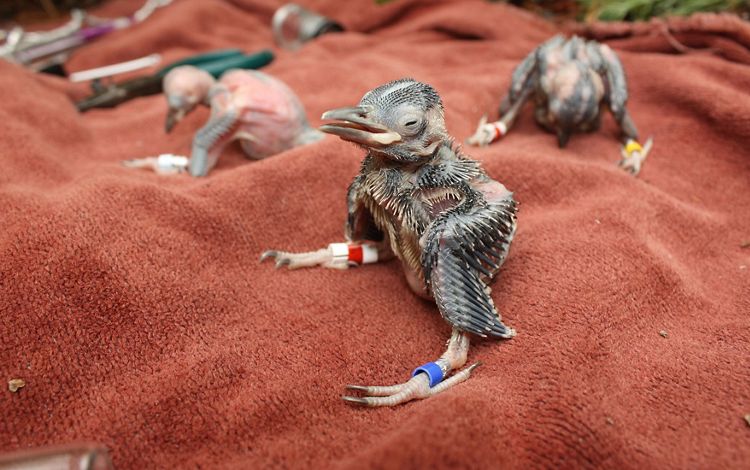
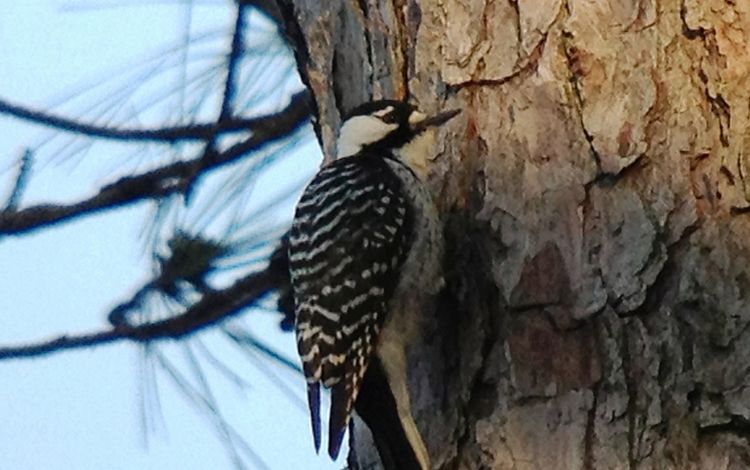
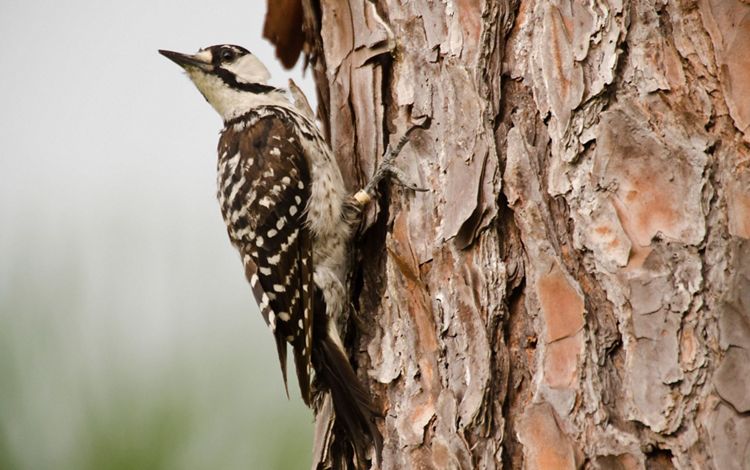
Protecting the Red Cockaded Woodpecker
In the early 1900s, John James Audubon reported that the red-cockaded woodpecker was found “abundantly” in the pine forests of the southeastern United States. Historically, this woodpecker's range extended from Florida to New Jersey, as far west as Texas and Oklahoma, and inland to Missouri, Kentucky, and Tennessee, with an original population numbering over 1.5 million.
Today it is estimated that there are about 6,000 family units (groups) of red-cockaded woodpeckers, or 15,000 birds, living in clusters—groups of cavity trees—from Florida to Virginia and west to southeast Oklahoma and eastern Texas, representing less than 1 percent of the woodpecker's population at the time of European settlement. The red-cockaded woodpecker has been on the endangered species list since October 1970—under a law that preceded the Endangered Species Act of 1973.
The primary threat for these birds is habitat destruction. The overall number of older pines and the size of the forests have both decreased. The remaining forestland is highly fragmented, making it hard for new generations of birds to find suitable sites. Regular fires help maintain open forests the birds prefer; fire suppression has had a detrimental effect on the red-cockaded population.
To help the red cockaded woodpecker, the Conservancy has undertaken careful restoration and management at the Disney Wilderness Preserve. After 20 years of this work, the area supports the species again. Vegetation is lush, with limited invasive species, due to controlled burns conducted by the Conservancy.
Breeding pairs are transported to the preserve each year. The rare birds are carried in boxes as juveniles from North Florida or Georgia. The translocation program is exact: Following strict federal rules, red-cockaded woodpeckers are carefully captured from healthy populations. They’re quickly transferred to the new site, where they again receive careful handling. At night, biologists climb longleaf pine trees, which have been prepared with man-made cavities. In the dark, they load the birds in the cavities. The nest hole is covered with a cloth, with a drawstring leading down to the forest floor. At sunrise, all the cavities are simultaneously opened, allowing the birds to immediately see potential mates.
Learn more about how red-cockaded woodpeckers nest and help support their populations.